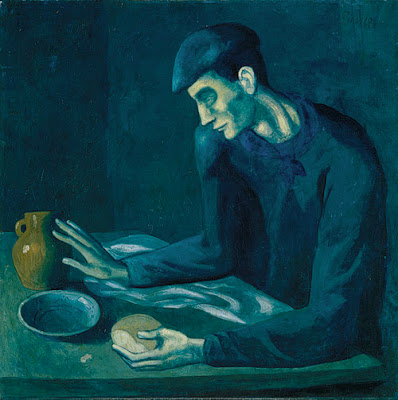 wallpaper
wallpaper  wallpaper
wallpaper Right: The Blind Man's Meal, 1903, by Pablo Picasso
Left: Gertrude Stein, 1905–6, by Pablo Picasso
The Blind Man's Meal is part of the blue period, 1901 until 1904, a phase where Picasso's work shows loneness, abandonment, desolation and sorrow in a very deep way using all hues of blue.
After settling in Paris in 1904 he started changing his colors and motifs.
Gertrude Stein, the American poet, used to gather people on Saturdays at her home and many of the intellectuals used to attend to discuss and have fun.
This is the story of the portrait of Gertrude Stein:
In her book The Autobiography of Alice B. Toklas (1932), Stein described the making of this picture: "Picasso had never had anybody pose for him since he was sixteen years old. He was then twenty-four and Gertrude had never thought of having her portrait painted, and they do not know either of them how it came about. Anyway, it did, and she posed for this portrait ninety times. There was a large broken armchair where Gertrude Stein posed. There was a couch where everybody sat and slept. There was a little kitchen chair where Picasso sat to paint. There was a large easel and there were many canvases. She took her pose, Picasso sat very tight in his chair and very close to his canvas and on a very small palette, which was of a brown gray color, mixed some more brown gray and the painting began. All of a sudden one day Picasso painted out the whole head. I can't see you anymore when I look, he said irritably, and so the picture was left like that."Source: Metmuseum





